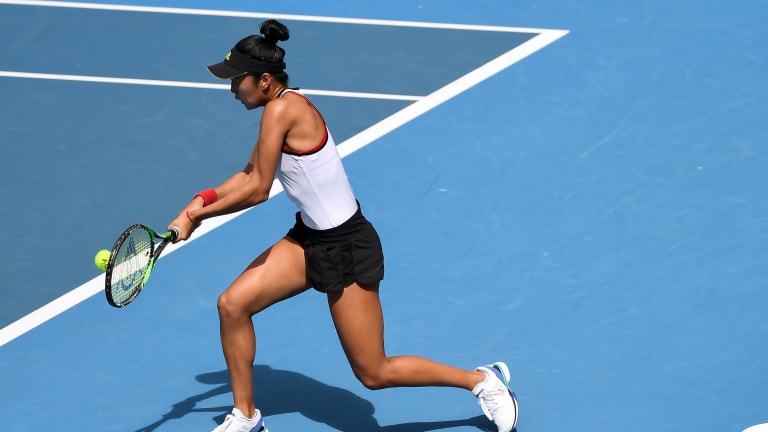One premise of professional tennis is that on a given day, any pro entered in a Grand Slam draw is capable of beating another. Call that a secondary notion. Then there is a primary notion; that over the long haul, the better player will win. But given the lengthy layoffs all pros have endured this year, which notion currently carries the most weight?
That question surfaced vividly today when Ann Li beat Alison Riske, 6-0, 6-3, in a second-round match played on Court 11. The 30-year-old Riske was seeded 13th and ranked 20th. Such data theoretically conferred an advantage over Li, who is 20 years old and ranked No. 128. Riske had also won their only previous match. And while Li this week is making her US Open main draw debut, Riske is a veteran of eight US Opens, as far back as 2013 reaching the round of 16.
"I feel great right now, I can't really say anything else," Li said. "I was ready for a battle. I think I've improved a lot so I was ready for a fun match."
But again, in 2020, so much of the tennis player resume has withered. Usually by this time of year, each player will have earned her ranking, the result of week after week generating results. With the hierarchy profoundly established prior to arrival at a major, in a matchup such as Riske versus Li, the numbers often usually play out.
While there’s a good chance Li is not familiar with the comic strip, “Peanuts,” she might well enjoy a comment once uttered by its protagonist, Charlie Brown: “Tell your statistics to shut up.”
With the speed of a race car and the precision of a diamond-cutter, Li commanded the real estate of the court right from the start. Taking advantage of two Riske double-faults in the first game, Li laced an inside-out forehand winner to break and rapidly went up 5-0. Her groundstrokes crackled, sharply organized, efficient drives off both sides that repeatedly issued crisp winners or rushed Riske into miscues.
Riske has made her way up the ranks with fitness, tenacity and the ability to create openings with flat drives and forward movement. It should be noted that the previous Riske-Li match had been on grass, a low-bouncing surface where Riske’s sharp brand of opportunism is exceptionally potent. The tennis played out differently on Court 11. Constantly on her heels, unable to seize time or space, Riske struggled on defense, grew frustrated trying to generate offense. To her credit, at 0-5, she fought off three set points before Li took the first with an untouchable crosscourt forehand.
"She hits a fast deep ball so I think just getting ready for that," Li said of her strategy. "And staying super calm with my body and trying to neutralize the shots. [I tried] to mix up the heights and speeds of the ball, and also stay aggressive at the same time."
